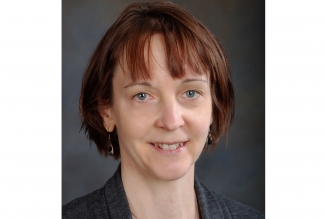At the National Weather Service’s Office of Science and Technology Integration (OSTI), we’re currently planning milestones for the coming year with our partners. OSTI manages a broad portfolio of research and development efforts designed to improve operational forecast capabilities, and our partners in these efforts are in both the research and operational communities. We aim to understand forecaster priorities, and to communicate operational requirements so that community members can come up with innovative solutions. Building connections across these diverse communities has meant learning new skills. We are accustomed to rigorous testing and evaluation processes before operational transitions, but are still figuring out how to ensure that researchers working in federal laboratories, academic organizations and industry can easily get, run, and improve our forecasting applications. We’re currently working with organizations that have experience in this area, such as the DTC and community modeling groups.
An essential element in our strategy is to shift from running a “quilt” of many separate, diverse software applications to running a Unified Forecast System, the UFS. The UFS can produce different kinds of forecast guidance (e.g., medium-range weather prediction, hurricane forecasts, subseasonal to seasonal predictions, severe-weather, air-quality) as different configurations of a single overall system, with shared infrastructure and scientific components. The unified approach reduces the amount of software that needs to be maintained and increases the physical consistency across timescales. We plan to retire or “sunset” many legacy codes and absorb their functionality into the UFS. Since there are dozens of codes in the quilt, it will take some years to fully transition to the streamlined, unified system.
One of the recent milestones we are particularly excited about is the release of the UFS medium-range weather application to the research community in March 2020. This ties together some of our big goals: it is the very first public release of the UFS and is the first release that has the research customer as its primary target. It is based on the Global Forecast System v15 software that was transitioned to operations in June 2019. The UFS organization is making major changes in how code is managed and the release process. All the code is on GitHub, so it is easy to access. There are teams that are ensuring that it is portable to computer platforms outside of NOAA and that users are able to get their support questions answered. Although this first release is necessarily limited in scope and options, it put some of the key elements in place for the planned Earth Prediction Innovation Center (EPIC) (a program anticipated to launch from the Weather Program Office - formerly the Office of Water and Air Quality - later in FY2020). EPIC will be making even greater strides toward improved software usability and more effective “Research to Operations and Operations to Research” or R2O2R.
There are a host of updates to operational codes planned for the coming year as well. We are expecting the final implementation of the High-Resolution Rapid Refresh short-range weather application in spring 2020 (HRRRv4) using WRF-ARW. A coupled space weather Whole Atmosphere Model - Ionosphere Plasmasphere Electrodynamics is planned for implementation in early 2021 (WAM-IPEv1), as well as an update to the Global Ensemble Forecast System in fall 2020 (GEFSv12). GEFSv12 includes separate aerosol and wave components, and will be a coupled UFS implementation. Those are just a few examples; there are about ten implementations planned in all for FY20. We are hoping to finalize the selections and schedule in the next few weeks.
It’s a time of great change and opportunity; it will take some time to establish effective communication and infrastructure across forecaster and researcher communities, but once established, we will be in a powerful position to accelerate the improvement of the nation’s forecast systems.
